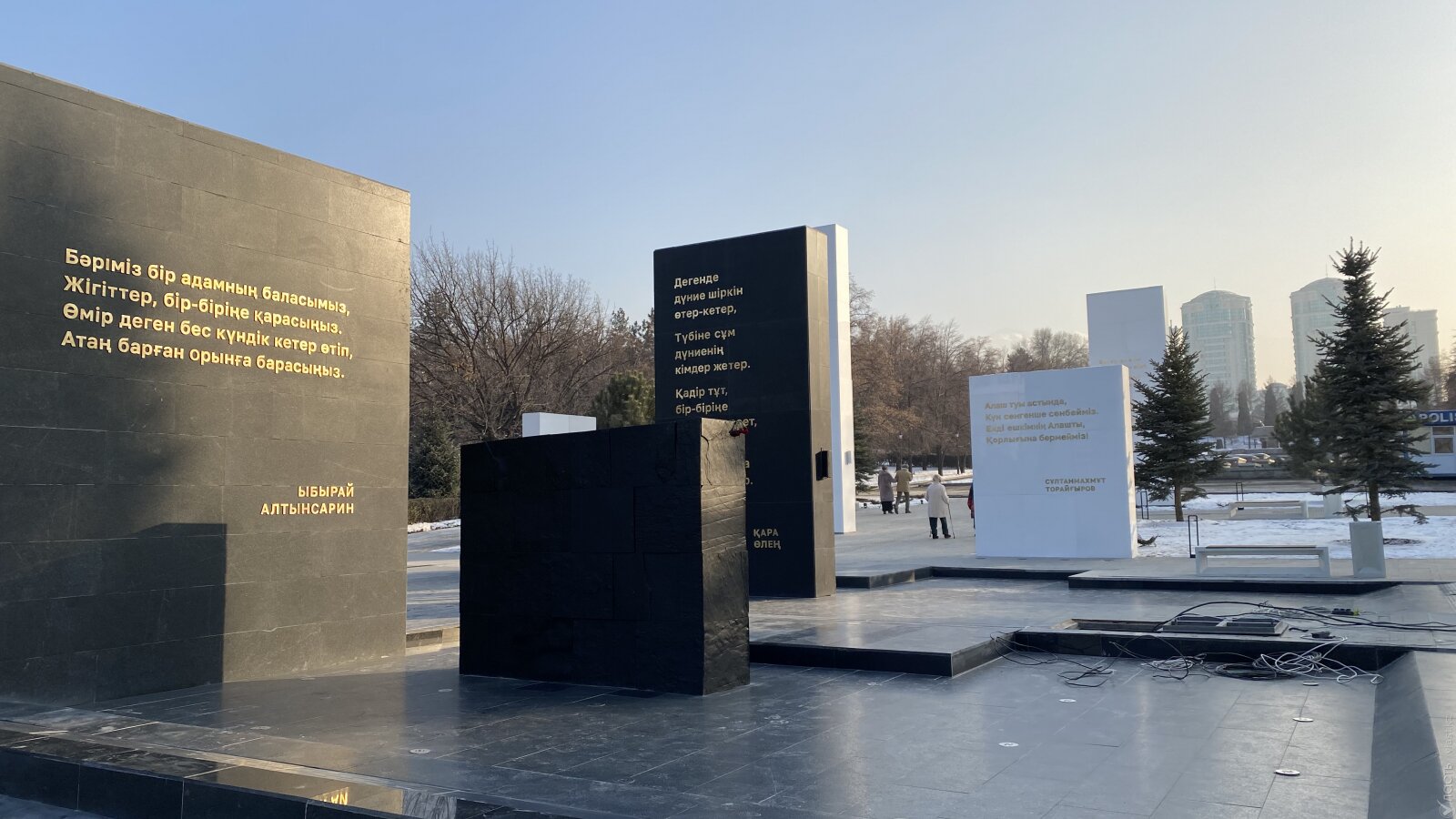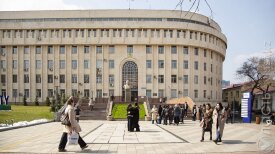Clearly, something had to be installed in remembrance of Bloody January. On December 23, the Tagzym Memorial (Kazakh for “reverence”) was inaugurated in Almaty’s Republic Square, and it was disappointing. Not because of how it looks, which is a matter of taste, but because it was installed without a prior public discussion and unveiled without the participation of the victims and their families. And perhaps this was the whole message.
Architecture is also politics. Republic Square is not an accessible area, with its uneven grounds and without proper walkways. The Akimat - the seat of the mayor - sits on a hill, literally cut off from the people. The center of power has been detached for about four decades, since the square was originally designed in Soviet times. But even then, a circle of professionals was involved in the conversation about its architecture.
A memorial dedicated to the victims of Qandy Qantar (as Bloody January is known in Kazakh) could have become an occasion for the first public discussion about architecture in Kazakhstan. Yet, this would have required a willingness to speak openly.
Almost one year ago, when the Akimat building was still blackened by the arson it suffered during the urban violence, architects urged not to rush to restore it, as the building could have become a memorial itself. Instead, they will now restore it to its pre-Qandy Qantar look.
That an installation selected during an opaque tender among two dozen other options was quickly installed during a winter day and inaugurated without public participation speaks volumes. It looks like the government wanted to hastily install a memorial just before the anniversary.
Instead, we would have needed not only a discussion about the art project, but also enough time to see the conclusion of the trials against the participants and the victims of Qandy Qantar (yes, even the victims are being tried), so that the people would have known who died and why. Wounds have not healed yet: People still fret about the sound of fireworks.
The memorial poses a range of concrete questions: What were the selection criteria? Was there an expert panel or was it just to the taste of a bureaucrat? Why are the names of the killed not displayed? Why are the citations quoted on the steles not related to Qandy Qantar? Why was it installed in the middle of winter, with part of the inscriptions still precarious? How would someone unaware of Qandy Qantar know what this memorial refers to?
“No matter how you approach this memorial, you will clearly feel [the urge] to go through this horror as fast as possible, and move towards the right direction,” Alexei Ivzhenko, one of the authors, said.
On the contrary, it would be better to stop, remember, and reflect on the trauma, and move on without running away from these terrible memories.
Поддержите журналистику, которой доверяют.








